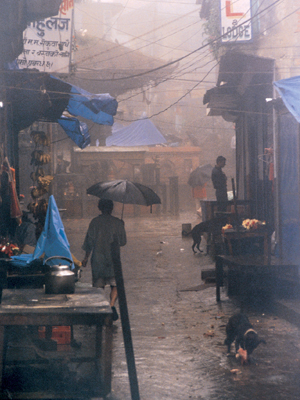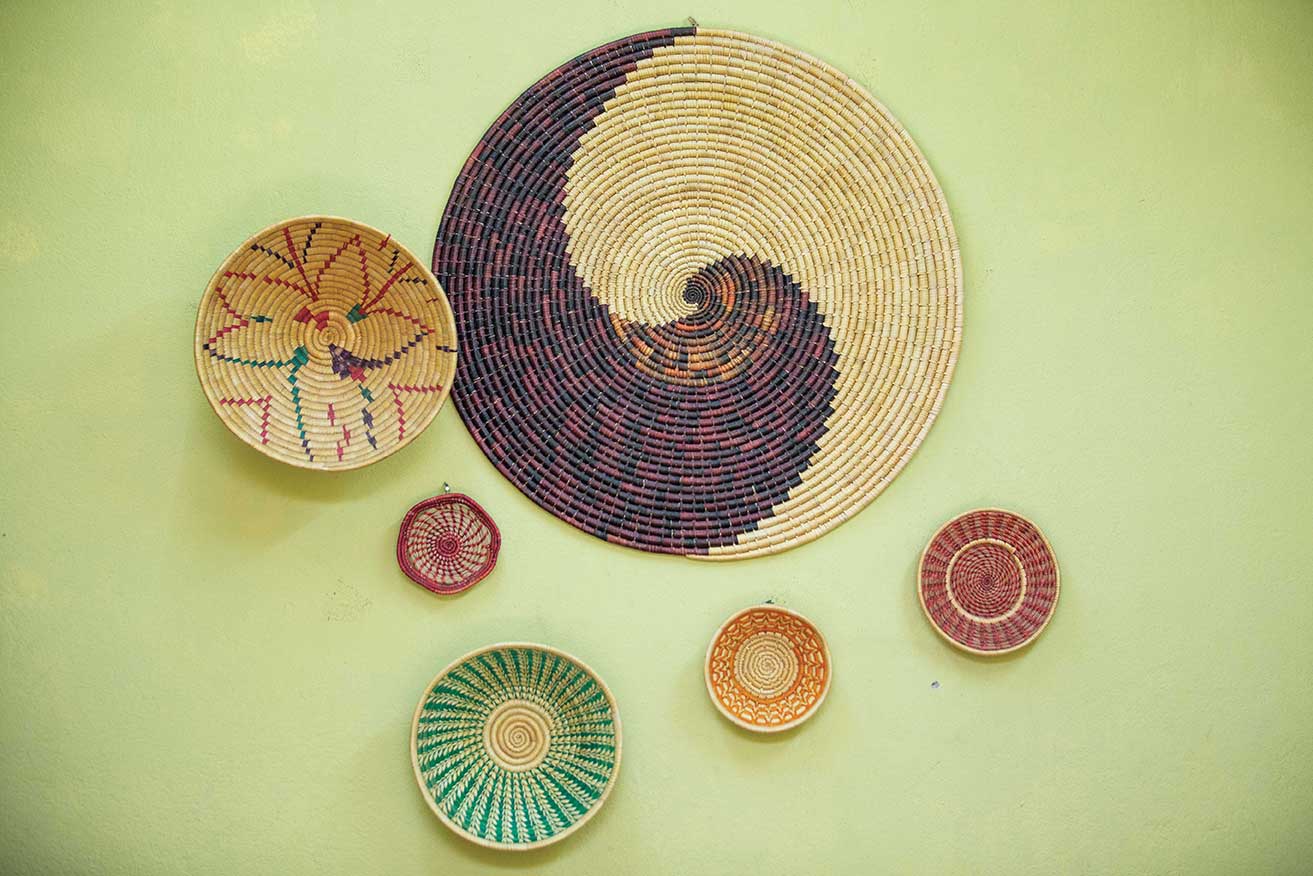The monsoon is almost upon us. If the past is an accurate predictor, in the coming weeks, the exodus of expatriates will rival the crest of flooding rivers later in the season. Before you buy that airline ticket home - or to the Sahara desert for a complete climate change - consider this: it might actually be possible to live well here in Nepal during the rainy season.
 It just takes a slight shift in perspective. You might think of the monsoon as sort of an extended rainy day. A chance to catch up on your reading- say, every novel ever written about Nepal and the complete works of Tolstoy and Dickens. Or why not get a start on your autobiography? If you are of a spiritual bent, this could be the perfect time to memorize the Baghavad Gita, or to take a three-month meditation retreat in a cozy cave on the dry side of the rain shadow. Opportunities for creative and scientific experiments and observations also abound. Imagine a mandala created by culturing different colors of mold and mildew...
It just takes a slight shift in perspective. You might think of the monsoon as sort of an extended rainy day. A chance to catch up on your reading- say, every novel ever written about Nepal and the complete works of Tolstoy and Dickens. Or why not get a start on your autobiography? If you are of a spiritual bent, this could be the perfect time to memorize the Baghavad Gita, or to take a three-month meditation retreat in a cozy cave on the dry side of the rain shadow. Opportunities for creative and scientific experiments and observations also abound. Imagine a mandala created by culturing different colors of mold and mildew...
For those brave enough to venture outside, the rewards can be great. I’m told that the profusion and color of native flowers in jungle and mountainside alike is riotously beautiful in this much maligned season, and that the monsoon is the time to take part in ceremonies involving rice planting. The awesome power and splendor of waterfalls and rivers swollen to ten times their dry season size is likewise a not-to-be missed experience. And the rain itself, whether falling in curtains from the sky, thundering on a tin roof, or creating sudden lakes in Kathmandu streets, is quite the remarkable phenomenon.
As for the better known challenges of the monsoon, they can be handled. For those who fastidiously prefer to wear completely dry, mildew-free clothes, there are laundry services that use electric dryers. The explosion of other small life forms, from viruses and bacteria to mosquitoes, ticks and leeches can likewise be elegantly avoided or peacefully co-habited with.
Friends have recommended Brazilian and Indian herbal concoctions as well as the introduction of “friendly bacteria” (such as is found in yogurt) to support the immune system and make the intestinal tract a less hospitable place for bacterial overpopulation. Hand washing may seem redundant in the near constant rain, but a bit of soap does go a long way in discouraging opportunist viruses. I am delighted- though occasionally startled- to host geckos (the small lizards with suction cup toes) in my house to keep the
buzz of mosquitoes down to a dull roar, and the nets can be a lovely addition to one’s bedroom decor. And leeches- well, those red trickles down one’s leg may look a bit alarming, but they are said to have curative properties, after all.
In August of last year, I brought home a new puppy. The underside of his poor paws and ears were coated rubbery black with hundreds of ticks, and he was quite exhausted from the infestation. Much to my surprise, the vet recommended and gave him an injection, and within a week all the ticks were gone. My reaction was to realize both that there are some simple solutions to some of the extra challenges during the monsoon and more broadly that it was fortunate that both the vet and I had been available during this
season.
When I think of the challenges for people in Nepal during the monsoon- from the higher numbers of babies who die of dehydration following a bout of dysentery to the landslides, to the lower participation in civic affairs and general malaise, it seems worthwhile for those who can keep a good attitude and have something to offer to stay around and lend a hand. We can keep each other company, play a few board games, contribute to the general well-being, and come to a year-round understanding of this amazing country
we live in.
For those not up to the adventure, see you next fall!

Liquid Gold: Nepal's Beer Industry Is Growing And Changing Fast
One need only glance at the beer section of the local liquor store to see that...










